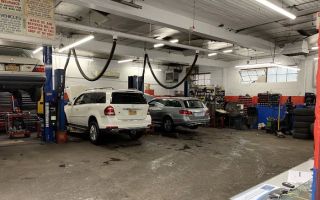How to Troubleshoot a Car That Won’t Start
As someone who’s experienced a car that wouldn’t start, I can tell you it’s a frustrating and stressful situation. The last time it happened to me, I was on my way to an important meeting, and my car just refused to turn on. At first, I thought it was a minor glitch, but the situation quickly escalated. After calling for a tow truck, I realized how important it is to understand the root cause of why your car won’t start. In this article, I’ll walk you through some troubleshooting steps I personally used and that you can try too before calling for professional help, like using towing services such as Rescue & Towing for assistance.
1. Check the Battery
The most common reason a car refuses to start is a dead or weak battery. If your car makes a clicking sound when you turn the key, but the engine doesn’t turn over, it’s highly likely that your battery is the problem. I learned this the hard way when my car's electrical system was still working (the radio, lights, and dashboard were on), but the engine refused to start. It turns out that the battery voltage was low, and it couldn’t provide enough power to start the engine.
To troubleshoot the battery issue, here are a few steps I recommend:
- Inspect the Battery Terminals: Sometimes corrosion on the battery terminals can prevent the car from starting. If you see white powder or rust around the battery posts, clean them with a mixture of baking soda and water.
- Jump-Start the Car: If the battery is dead, jump-starting the car using jumper cables and another vehicle can get you back on the road temporarily. If the car starts, you may need to replace the battery soon.
- Test the Battery Voltage: Use a multimeter to test the voltage. A healthy car battery should have a voltage of 12.6 volts or higher. If it’s lower, it might be time to replace the battery.
2. Examine the Fuel System
When your car refuses to start, another culprit could be the fuel system. I had a situation where I thought the battery was at fault, but after replacing it, my car still wouldn’t start. Upon further investigation, I discovered it was a clogged fuel filter. If your engine cranks but doesn’t start, there may be an issue with the fuel system. The engine needs fuel to run, and without it, you’ll be left stranded.
Here’s how I go about troubleshooting fuel issues:
- Check the Fuel Gauge: It’s a simple one, but sometimes the fuel gauge might be faulty, or you could have accidentally run out of gas. If your fuel gauge reads empty but you’re sure you have fuel, try adding a gallon of gas and see if it starts.
- Listen for the Fuel Pump: When you turn the key to the “on” position (without starting the engine), you should hear a buzzing sound for a few seconds. If you don’t hear anything, the fuel pump could be faulty, and you may need to have it replaced.
- Inspect the Fuel Filter: If the fuel filter is clogged, it could prevent the proper flow of fuel to the engine. Replacing the fuel filter can resolve this issue.
3. Check the Starter Motor
If the battery is working and there’s enough fuel, but your car still won’t start, the issue may lie with the starter motor. I once had a car that would only occasionally start, which was a sign of a faulty starter motor. A bad starter can fail to turn over the engine even if the battery and fuel system are working fine. A worn-out starter can also make a grinding noise when trying to start the car.
Here’s how to troubleshoot the starter motor:
- Listen for Unusual Sounds: If you hear a grinding or whining noise when turning the key, it could be a sign that the starter motor is damaged. In such cases, it’s best to have a mechanic inspect and replace the starter if needed.
- Check for Electrical Connections: A loose or corroded wire can prevent the starter motor from functioning. If you’re comfortable working with the electrical system, try inspecting the starter motor wiring.
- Test the Starter Motor: You can test the starter motor using a multimeter to check for power flow. If the starter doesn’t get any power, it’s likely that the motor has failed and needs to be replaced.
4. Investigate the Ignition System
The ignition system is another critical component that can cause your car to fail to start. In my experience, a faulty ignition switch or a worn-out key can prevent the car from starting. The ignition system provides the electrical power needed to ignite the fuel in the engine, and if any part of the system is malfunctioning, it can cause a no-start situation.
Here’s what you should do if you suspect an ignition issue:
- Test the Ignition Switch: Turn the key to the “on” position and see if the dashboard lights come on. If the lights don’t illuminate, it could indicate a faulty ignition switch.
- Inspect the Ignition Key: A worn-out or damaged key may not engage the ignition properly. If you’ve been using the same key for years, consider replacing it.
- Check the Fuses: A blown fuse in the ignition system can cause the car to fail to start. If you find a blown fuse, replace it and see if the car starts.
5. Call for Roadside Assistance
If you've tried troubleshooting the issue yourself but your car still won’t start, it may be time to call for professional help. I’ve been in situations where I spent hours troubleshooting and still couldn’t identify the problem. That’s when I decided to call for roadside assistance, and it turned out the issue was more complex than I initially thought. Roadside assistance services, like those provided by Rescue & Towing, are invaluable when you’re stuck on the side of the road.
Roadside assistance companies can send a mechanic to assess the situation or, if necessary, tow your car to the nearest repair shop. Depending on the service, they may even be able to jump-start your car or provide emergency fuel delivery, which can get you back on track.
SEO Title: How to Troubleshoot a Car That Won’t Start: Identify Common Issues and Solutions
SEO Keywords: car troubleshooting, car won’t start, common car problems, towing services, roadside assistance, car repair, ignition system issues
SEO Description: Learn how to troubleshoot a car that won’t start, including common issues like battery failure, starter motor problems, and ignition issues. Get tips for diagnosing the problem and when to call for roadside assistance and towing services.


























